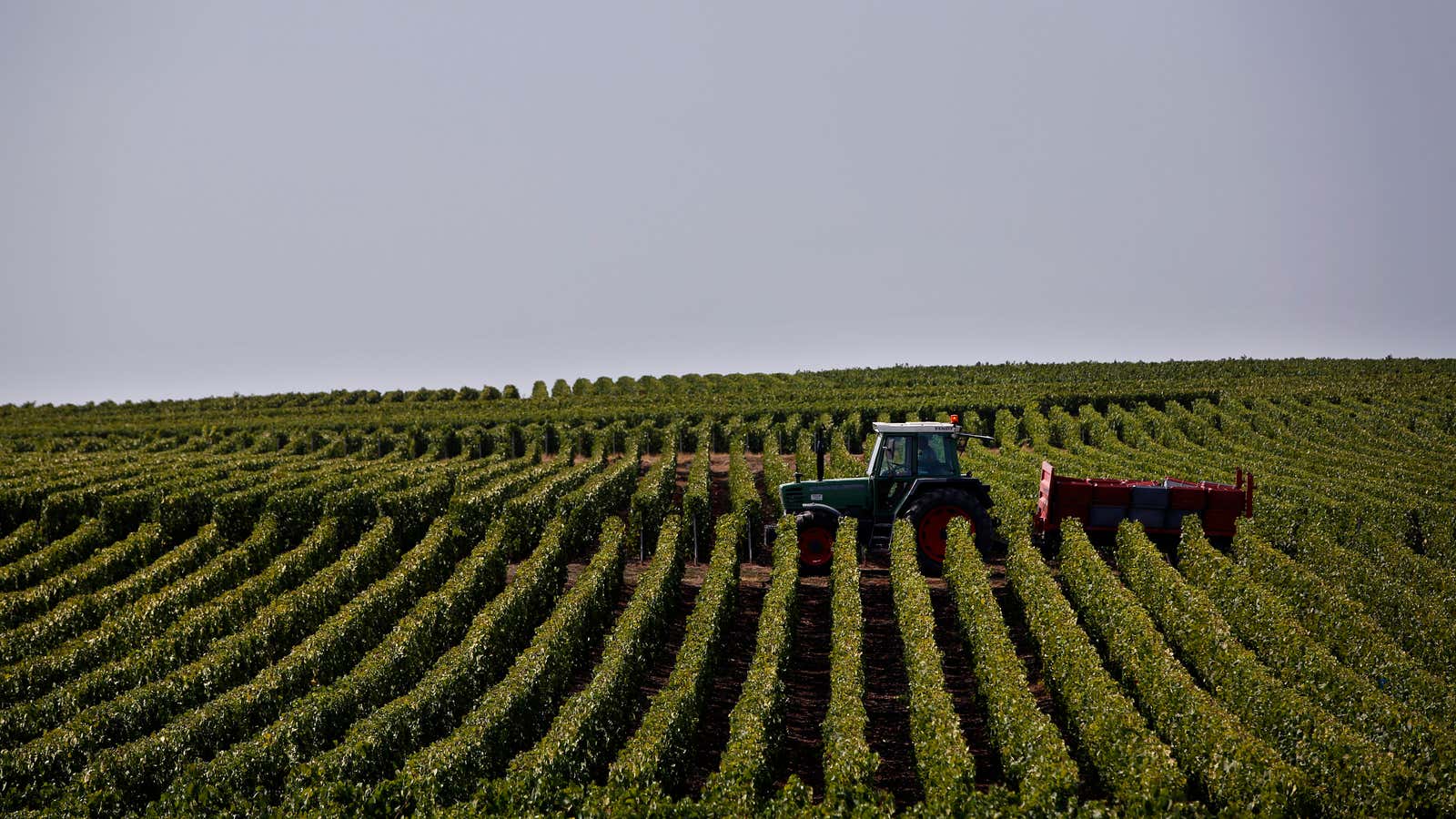The challenge begins in a race, where participants use tractors to stack heavy bales of hay faster than their opponents.
Never operated a tractor before? Can’t tell the difference between a bale of hay and a bale of straw? That’s fine. Even people with supple hands and no manual labor experience can compete in this challenge, which exists entirely in cyberspace and comes with a substantial cash prize.
You’ll have to be in Europe, though, where the popularity of online farming-simulator gaming has reached a level that now supports a 10-tournament esports season, which will culminate with a €100,000 ($114,074) grand prize. The total prize pool for the farming simulator league, organized by the company Giant Software, will be worth €250,000 including non-cash prizes. Players will compete against one another by playing Farming Simulator 19.
“Competitive farming is something people [have enjoyed] for years now, but it hasn’t been done in esports so far,” said Giants Software CEO Christian Ammann in a statement. “We have lots of esports enthusiasts in our company who can’t wait to show the world that farming can indeed be fun and competitive at the same time.”
Previous smaller Farming Simulator competitions have mostly centered around races to stack bales of hay, but the types of challenges will be expanding, the company said. Competitors will also be taking part in harvesting challenges to see “who is the best on the field.” The Farming Simulator game wasn’t originally designed to be competitive; it was meant to just replicate the experience of performing real-life farm tasks on a screen. However when played side-by-side, people can compete against one another in carrying out those tasks.
It might sound silly, tending to farmland from the comforts of a smartphone or PC. After all, FarmVille, which for a period was hugely popular on Facebook, then became subject of criticism and scorn, including by talk-show therapist Phil McGraw, who scolded a person on his show for having a “ridiculous addiction.” In that online game, users were challenged with cultivating animated crops using virtual “farm coins” to buy seeds and farming tools.
Still, FarmVille was arguably the most widely-played game in existence. At least for a time—Zynga, the company behind FarmVille, had 72 million fewer monthly unique users in March 2018 compared to March 2010.
Rather than FarmVille’s cartoonish aesthetic, though, the competitive farming game being played in Europe looks a lot more like the many long-running flight-simulator game series that use more realistic graphics to replicate the experience of piloting airplanes.
The popularity of these types of simulation games, and the money esports now generate, can’t be ignored. According to research published in May 2018 by Newzoo, a firm that tracks esports market data, more than 77 million people across Europe participate regularly in esports. And in 2016 alone, those people generated more than $346 million in revenue.
Sweden has been the largest esports market in Europe by revenue, followed by Russia, France, and the UK. Gaming is dominated by men, who make up about 84% of the total audience, most of which are between 18 and 34 years old.
But just why people are so enthralled with Farming Simulator remains something of a mystery. The game hit the top of the videogame charts in the UK back in 2015, Vice reported, beating out hugely popular titles like Grand Theft Auto and FIFA soccer videogames. Maybe everyone has a little farmer in them, or maybe people just love hyper-niche games. Either way, the ability to climb up into a tractor and start managing a cyber farm has caught some public imagination—and a little competitive fun, to boot.
